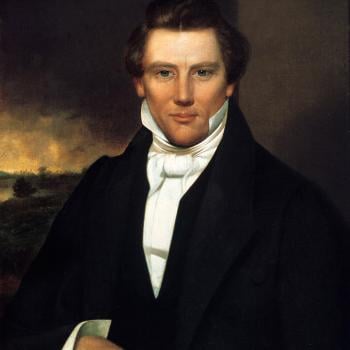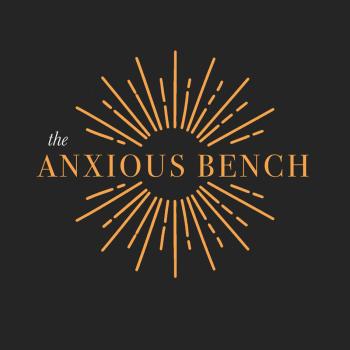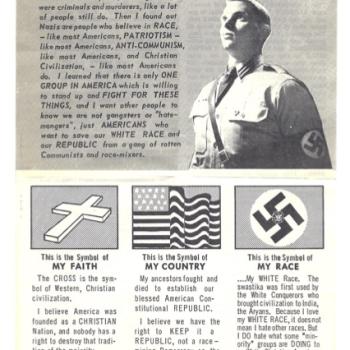The U.S. Constitution mandates a decennial census, used to allocate representatives in the House and any “direct taxes … apportioned among the several states.” The U.S. government undertook its first census in 1790 and has done so every ten years since. The first census counted individuals by household, noting whether individuals were free or enslaved and whether or not white men were above or under sixteen years of age.
The precise questions and procedures for the decennial census have changed over time, and there is currently a political uproar over the Trump Administration’s plan to include a citizenship question in 2020. Before discussing that question, I want to draw a parallel with the Census Bureau’s abandoned plan to include a question about religion on the 1960 decennial census, an episode discussed by Kevin Schultz in a 2006 Journal of American History essay, “Religion as Identity in Postwar America: The Last Serious Attempt to Put a Question on Religion in the United States Census.”
Most Americans do not know that the Bureau over the years has collected a tremendous amount of information about religion. Beginning in 1850, the Bureau asked its district officials to collect information on the number of churches and their denominations in each county. The Bureau collected more detailed information about churches in 1890. Then, beginning in 1906, the Bureau conducted a separate decennial census on “Religious Bodies.” The Bureau tabulated and published the results of these Religious Bodies censuses from 1906, 1916, 1926, and 1936.

The Religious Bodies censuses did not ask individuals about their beliefs and affiliations. Instead, each congregation (or, in some cases, denominations on behalf of individual congregations) filled out a schedule that included data on membership, the value of church buildings, church budgets, Sunday school programs, and pastoral education. The published Religious Bodies census reports are an valuable source of sociological data about American religion in the first half of the twentieth century. Unfortunately, the individual census schedules were not retained, with the notable exception of the 1926 census. These surviving schedules — more than 230,000 — are a treasure trove of information about American congregations. They have been collecting dust at the National Archives for more than a century. My George Mason University colleague Lincoln Mullen and I are currently at work on a project to digitize the schedules, make them accessible and browsable, and use them to create a spatial dataset. For more, see here.
The 1936 Religious Bodies census suffered because some denominations did not participate. Then in the wake of the Holocaust, there was a newfound uneasiness about the governmental counting of religious institutions. The Census Bureau began collecting and tabulating a 1946 Religious Bodies census, then shelved the project.
At the same time, some politicians, church leaders, and Bureau officials toyed with the idea of adding a question about individual religious affiliation to the 1950 decennial census. The idea was dropped but then revived in the mid-1950s in preparation for the 1960 census, partly because Bureau officials regarded religion as “one of the major underlying social factors in American life.” Wisely, the Bureau director, Robert W. Burgess, encouraged public dialogue on the matter of a religion question.
The early Religious Bodies censuses had been largely uncontroversial. Jewish leaders expressed some wariness that robust counts of Jewish Americans would fuel anti-Semitism, but the American Jewish Committee collaborated with the Census Bureau.
The decennial household survey was another matter. Participation in the household survey is mandatory, though as Schultz reports, through the 1950s “only one person had been prosecuted for refusing to answer a Census Bureau official’s question — a Rhode Island farmer who ‘willfully and maliciously’ refused to reveal the size of his wife’s farm in the 1890 census.” The ACLU objected to a mandatory question on religion, which led the Bureau to contemplate a voluntary question. The Bureau tested a voluntary religious affiliation question in 1956 and 1957.
From the start of the debate, Catholic organizations were strongly supportive and Jewish organizations were strongly opposed. Why? According to Schultz, Catholic leaders “felt that the census data would provide demonstrable proof of the numerical power of Catholics in the United States.” Jewish leaders, by contrast, “argued that the question would violate the principle of separation of church and state and would yield dubious information that would only provide fodder for anti-Semites and other bigots.” For instance, the census would verify that American Jews had high levels of income and education. Jews also argued that the numbering of religious groups smacked of Nazism.
Jewish opposition, coupled with objections from the ACLU (which retracted its initial approval of a voluntary question), convinced Burgess to scuttle the planned religion question. “Burgess had begun to sense,” Schultz writes, “that the debate had generated such a fierce dynamism that it might turn people against the entire 1960 census.” Burgess wanted the religion question, but his primary duty was to ensure an accurate enumeration of the American population.
The 1950s debate over a proposed religion question is instructive for the current controversy over a citizenship question. Regardless of the motivations of administration or Republican Party officials, there is no reasonable constitutional objection to a citizenship question per se. The Census Bureau already asks about race, sex, relationships, and home ownership. Even if the Trump Administration wanted to include a citizenship question for ulterior motives, I would be very surprised if the Supreme Court ruled that it could not include the question.
At the same time, the question may be imprudent. While the Census Bureau today collects all sorts of information, its primary task is the decennial count of the entire American population. Burgess saw no constitutional reason against his proposed religion question yet understood his duty to ensure an accurate count. He scrapped the question.
I am not arguing for or against the citizenship question. I do not know whether or to what extent a citizenship question would depress an accurate count. Perhaps the Bureau’s own tests — conducted rather late in the game — will provide confidence in the question and the count. Perhaps not. Either way, Americans looking for historical precedents to the current debate might find the controversy over a religion question instructive.












